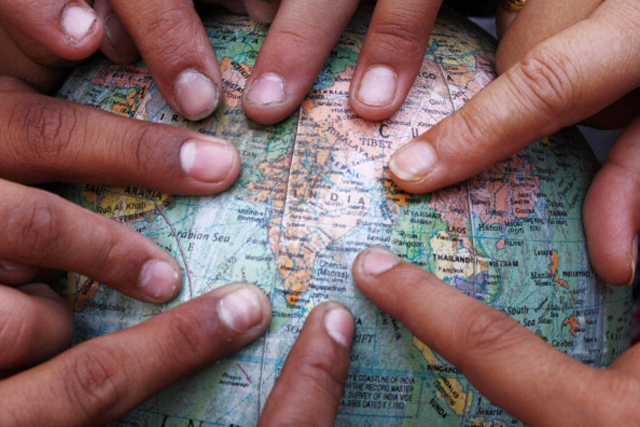
How will the world look like in 2100? It’s impossible to know for sure, but the United Nations Population Division has used its demographic data to make some pretty astounding projections. The world’s population is on track to reach 9.6 billion by midcentury and nearly 11 billion by 2100, which is 700 million more than was projected two years ago. In general, rich countries’ populations will get older and smaller while poor countries will do the opposite and grow to unprecedented levels.
What does this mean? Population booms and declines in specific areas of the world will transform the world politically and economically. For example, Africa’s astounding population growth over the next 9 decades will reach unprecedented levels while most of the deveopled world will see a steady decline. With more people in less economically developed countries and less people in the first-world, will this create an even deeper economic divide?
Here are the top five conclusions of this study.
1. Africa’s Population is Going to Grow…A Lot
As of right now Africa has a relatively low population density, meaning that it is a sparsly populated continent. To put things into perspective, Africa’s land mass is about 13 times the size of India but India has a bigger population in Africa.
According to studies, the population of Africa will not double, not triple but quadruple in the next 90 years.
The poorer Sub-Saharan region will see the most dramatic boom in population. Nigeria, the West African nation slightly larger than Texas, is on track to surpass the United States as the world’s third-most populous country by 2050. The size of its population may rival that of China by the end of the century unless populations trends change. In Nigeria, 10% of married women of childbearing years are taking birth control pills, using intrauterine devices or other forms of modern contraception. That compares with 72% of married women of reproductive age in the United States.
Tanzania — one of today’s poorest countries — has a similar projected population growth. The subsaharan country which is the size of California, may reach to hold the population almost the size of the United States. If these country’s remain as poor and trouble as today, resources will only get scarcer and instability will likely be a major issue.
2. China Will Shrink and its “Missing Women” Will Contribute
It’s pretty well known that China has a one child policy…meaning that each couple is allowed to only have one off-spring. According to calculations, in order for a country to maintain the same population, each woman must bare 2.2 children…. China is 1.2 people below that. But that’s not the only population deflation China is seeing.
China is suffering from what people are referring to as “missing women.” There has been a shortfall in the number of women in China relative to the number that would be expected if there was no sex-selective abortion of female infanticide. In other words, there is a shortage of women and with fewer women come even fewer off-spring.
If China wishes to challenge this drop in population, we may expect it to let go of its one-child policy. Another thing we may also expect is immigration. China is particularly closed off to immigration right now, but opening its borders to immigrants could help combat its gender imbalance.
3. India Will Stop Growing

(Getty Images)
India has seen a dramatic boom in population which has ranked it as the second most populous country in the world (after China). Although it is predicted to surpass China by 2025, this study stipulates that the population growth will finally plateau around 2065.
India’s current population is about 1.21 billion people, with a fertility rate of approximately 6 children per woman. As stated by About.com:
India’s high population growth results in increasingly impoverished and sub-standard conditions for growing segments of the Indian population. As of 2007, India ranked 126th on the United Nations’ Human Development Index, which takes into account social, health, and educational conditions in a country.
4. Developed Countries Are Losing People
“Developed” countries such as the United States, Japan, South Korea and other Western countries are seeing a stagnation in population growth or an outright decline. For example, Europe is expected to decrees in population. The only developed country which is expected to experience a pretty sustained growth is the United States.
5. Immigration is a Big Factor in the U.S

A candidate for citizenship holds an American Flag. (Getty Images)
Unlike say, Japan, who has shied away from opening its borders, immigration to the United States ia complex demographic phenomenon and has been a major source of population growth and cultural change throughout much of the history its history. Immigration to the U.S. is one of the biggest factor in the U.S’ predicted sustained population growth. Immigration helps the U.S. to do what very few other countries, including China, has yet figured out: how to be a rich country with a growing population.